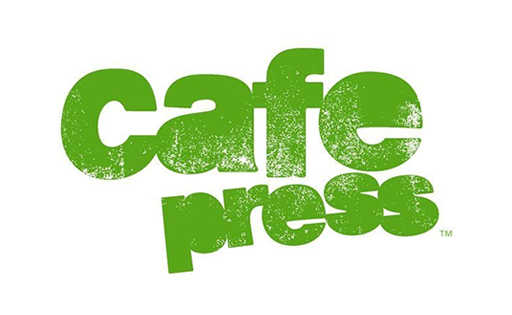In the vast expanse of the interstellar universe, where humans, mutants, and aliens coexist in a tumultuous blend of cultures, a new era of hegemony has dawned. Welcome to the Blood Century, a dark and enigmatic world that thrives on an extreme class system, cosmic religions, and the implementation of blood sacrifice. Stepping into this interstellar future, one encounters a society deeply influenced by both science fiction and the dark ages, a collision of contrasting elements that form the unique tapestry of an era like no other.
The Hegemonic Class System
Within the Blood Century, a rigid class system reigns supreme, reminiscent of an age long past. Society is stratified into distinct hierarchies, where power and privilege are concentrated at the top, while the lower classes struggle to survive. Wealth, technology, and influence shape the social order, leaving little room for upward mobility. This extreme divide perpetuates a sense of inequality and tension, fueling the underlying conflicts within this dystopian renaissance.
Cosmic Religion and Blood Sacrifice
At the core of the Blood Century's belief system lies the Cosmic Religion, a spiritual ideology that intertwines with the technological advancements of the era. Its followers perceive the universe as a divine entity, pulsating with energy and purpose. This belief manifests in the practice of blood sacrifice, where devotees offer their life force as a tribute to appease the cosmic forces and attain transcendence. This macabre ritual both unites and divides the inhabitants of the Blood Century, blurring the line between spirituality and fanaticism.
Interstellar Futuristic Cultural Style
The cultural aesthetics of the Blood Century are a kaleidoscope of interstellar influences. A fusion of science fiction and the dark ages gives birth to a visual landscape that is simultaneously dystopian and enchanting. Advanced technology coexists with archaic relics, creating a stark juxtaposition that captivates the senses. Gleaming neon lights pierce through the shadows, casting an otherworldly glow on ancient stone structures. This interstellar cultural style reflects the paradoxical nature of the Blood Century, where progress and regression coalesce.
The Interplay of Humans, Mutants, and Aliens
In this mixed world, humanity has evolved alongside mutants and aliens, shaping a complex interplay of diverse beings. Humans, with their ingenuity and resilience, strive to maintain their dominance, often exploiting the unique abilities possessed by mutants and the alien races. Mutants, burdened with physical and psychological abnormalities, form a disenfranchised group caught in the struggle for survival. Aliens, hailing from distant galaxies, offer an enigmatic presence, their motives and intentions shrouded in mystery. The coexistence of these disparate entities contributes to the intricate fabric of the Blood Century.
The Blood Century, with its dark futuristic renaissance and extreme class system, is a world unlike any other. It stands at the intersection of sci-fi and the dark ages, where interstellar cultural styles shape the perception of society. With the Cosmic Religion and blood sacrifice reigning supreme, the inhabitants of this era find themselves both united and divided. As humans, mutants, and aliens navigate the intricate web of power dynamics, the Blood Century remains a compelling testament to the complexity of human nature and the allure of a future entwined with ancient traditions.
As the Blood Century unfolds, the world becomes a stage for epic struggles and hidden alliances. Within the oppressive class system, whispers of rebellion and underground movements gain momentum. The lower classes, burdened by their servitude, yearn for liberation and equality. Mutants, who have long suffered from discrimination and ostracization, seek to assert their rights and challenge the established order. Even some enlightened individuals within the upper echelons of society question the moral implications of the blood sacrifices and the dominance of a select few.
Amidst this backdrop, the interstellar futuristic cultural style continues to evolve and captivate the imagination. Architectural marvels rise from the depths of decaying ruins, blending cutting-edge technology with the echoes of forgotten civilizations. Hovering vehicles traverse the skies, leaving trails of shimmering light against a backdrop of eternal darkness. Artistic expressions meld together in a harmonious chaos, depicting both the horrors and beauty of this era.
The cosmic religion, with its focus on blood sacrifice, fuels the never-ending cycle of power and control. Leaders, known as High Priests and Priestesses, rise to prominence through their supposed ability to commune with cosmic forces. They wield authority with an iron fist, manipulating the beliefs of their followers to maintain their dominion. The promise of transcendence through sacrifice becomes both a tool of control and a source of hope for those seeking meaning in an otherwise chaotic existence.
But not all inhabitants of the Blood Century accept the status quo. A resistance, composed of individuals from various backgrounds, emerges to challenge the oppressive regime. This unlikely alliance between humans, mutants, and even sympathetic aliens defies the boundaries imposed by the class system. They rally behind the shared belief that true progress lies in unity and equality, rather than the sacrifice of innocent lives.
As clashes erupt between the opposing factions, the fate of the Blood Century hangs in the balance. The struggle for freedom intensifies, and the boundaries between good and evil blur in the chaos of revolution. Each decision carries weight, as the characters navigate moral dilemmas, confront their deepest fears, and question their own convictions. It is within these moments of uncertainty that the true essence of humanity, mutantkind, and even the enigmatic aliens is revealed.
The Blood Century, with all its dark allure and interstellar cultural stylings, offers a stark commentary on the dangers of extreme ideologies and oppressive systems. It serves as a cautionary tale, warning against the allure of power at the expense of compassion and the suppression of individuality in the pursuit of control. The choices made by the inhabitants of this dark future will determine whether the Blood Century remains trapped in its cycle of darkness or embraces the potential for a new era of enlightenment and harmony.
In this interstellar world, where the clash of civilizations and the mingling of species shape the destiny of an entire era, the Blood Century stands as a testament to the enduring struggle between light and darkness, progress and regression. It is a world where the reign of blood sacrifice and the pursuit of transcendence collide, leaving an indelible mark on the interstellar tapestry of history.
As the Blood Century hurtles towards its climax, the forces at play become increasingly volatile. The resistance movement, fueled by the fervor of those who yearn for change, grows in strength and determination. United under a common cause, their actions ripple through the fabric of society, exposing the flaws and injustices of the ruling elite.
Within the corridors of power, the High Priests and Priestesses feel their grip on authority slipping. Fear and paranoia consume them as whispers of dissent echo through their opulent palaces. Desperate to maintain their dominance, they resort to increasingly extreme measures, intensifying the blood sacrifices and tightening their control over the masses.
But even as the struggle for liberation escalates, a flicker of hope emerges. The intermingling of humans, mutants, and aliens, once seen as a source of division, now becomes a wellspring of unity. Bound by their shared aspirations for a better future, they find strength in their diversity and resilience in the face of adversity. Through cooperation and understanding, they challenge the very foundations of the class system and cosmic religion that have plagued their world for so long.
The interstellar cultural style evolves in response to the shifting dynamics. Artists and visionaries find inspiration in the defiance and courage of the resistance. Their works reflect both the darkness and the glimmers of hope that permeate the Blood Century. Sculptures and paintings depict the struggle for freedom, while music reverberates with the yearning for liberation. The fusion of futuristic and ancient influences becomes a visual manifesto, showcasing the resilience of the human spirit in the face of oppression.
As the final battle approaches, the Blood Century hangs on a precipice. The cosmic forces that have shaped its destiny teeter on the edge of upheaval. The future of the interstellar world hinges on the choices made by its inhabitants, as they confront their own beliefs, prejudices, and desires. Will they succumb to the allure of power and perpetuate the cycle of sacrifice, or will they rise above their differences and forge a path towards a more enlightened future?
In the end, the Blood Century stands as a testament to the indomitable nature of the human spirit. It serves as a stark reminder that even in the darkest of times, hope can emerge from the most unlikely places. Through the exploration of interstellar cultures, the clash of ideologies, and the pursuit of transcendence, this dark futuristic renaissance reveals the potential for transformation and the resilience of those who dare to challenge the status quo.
In the annals of history, the Blood Century will be remembered as a turning point—a crucible in which the destiny of a world was forged. It is a cautionary tale of the dangers of unchecked power and an inspiration to those who strive for a more egalitarian and compassionate society. As the final chapter draws near, the question remains: Will the Blood Century be remembered as a dark age mired in bloodshed, or as the catalyst for a new era of interstellar harmony? The answer lies in the choices made by the inhabitants of this remarkable, yet haunting world.



































